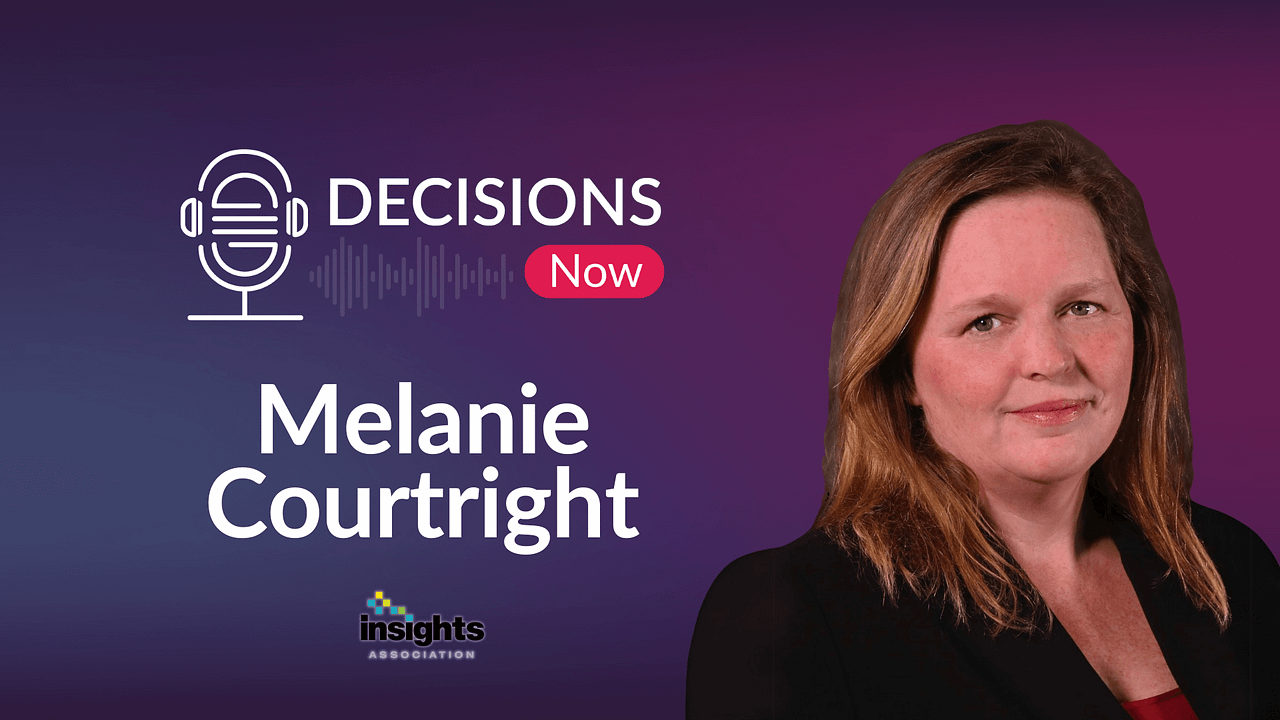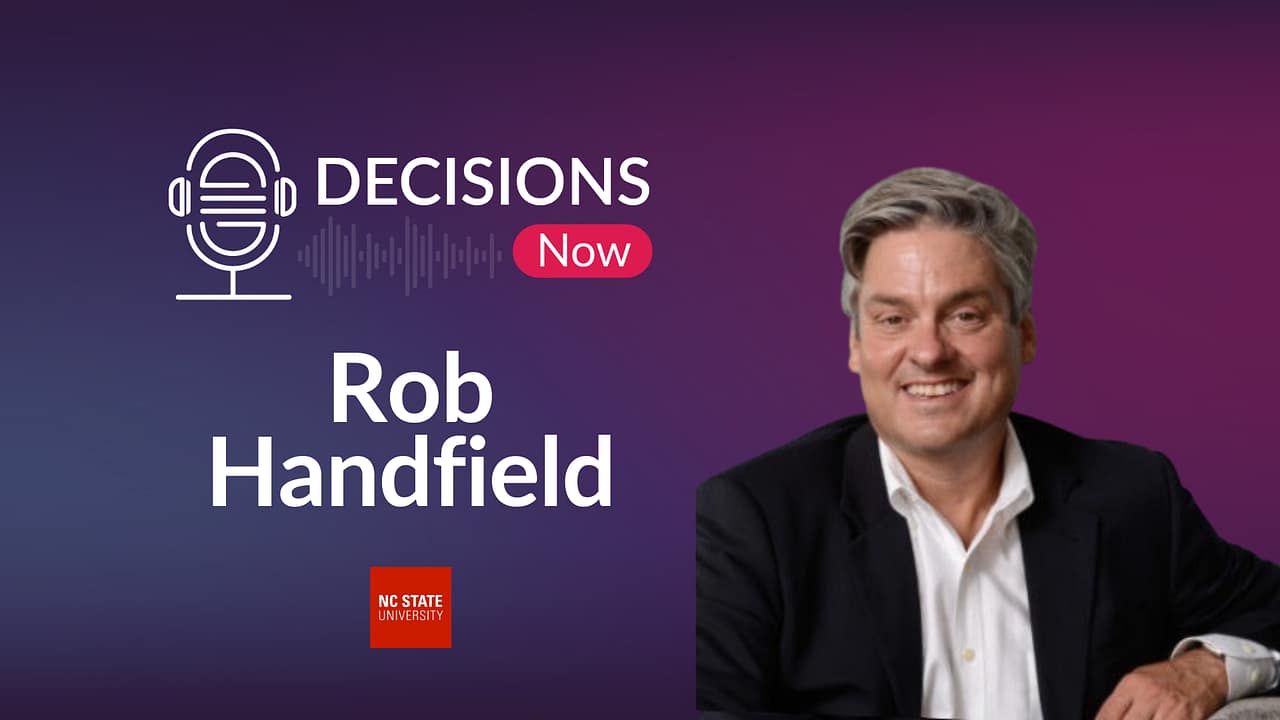Data analytics and AI are terms we hear in the market way too often. Everywhere you go, people want data-driven insights, now more than ever it’s essential to understand what it takes to forge this strong analytic transformation journey. In the ninth episode of the Decisions Now podcast, we talked with Data and Analytics Professor at IE Business School and Founder of DBP Institute, Prashanth Southekal about what it takes to build a strong data culture powered by AI and analytics.
In this conversation, co-hosts Rigvinath Chevala, EVS chief technology officer, and Erin Pearson, EVS VP of Marketing talk to Southekal about what data analytics can do for you, types of insights, and the criteria that make insights actionable. Subscribe to the Decisions Now podcast today, you can find us on Spotify, Apple Podcasts, and Amazon Music among other platforms.
Data Analytics & Insights
“The whole purpose of data analytics is to ask the relevant questions, so as to gain insight to facilitate decision-making,” Southekal said. “It is basically patterned, specifically, it’s about correlations, it’s about relationships, inferences, outliers, predictions, so on and so forth, which will help me make a decision if I had not known it earlier.”
Giving an example he said, he moved from India to Calgary in 2009 and bought a property, and if he had the correct insights, he would’ve opted to buy in Vancouver instead.
“So instead, I didn’t have that insight, now I have to work even now, and I’m not still in my retirement,” Southekal said jokingly.
He classified insights into two types:
1. Performance insights: Are all about knowing different information, for example: knowing your top customers, and which were the top five accounts with the most spend? Performance insights, however, may not give you all you need; hence they need to be made into actionable insights.
2. Actionable insights: These are where the real value for companies lies. Taking the information and using it or putting it into action to improve your business models.
When working with a few retailers on a project, Southekal and his team classified different SKUs into A, B, C, and D categories and realized the D category items were extremely slow-moving, leading them to the conclusion to end the contracts with category D vendors. Despite this being a great insight, the team couldn’t act on it like they wanted to due to being locked into a multi-year contract with those vendors.
“So, on one hand, you had great insights, which is a performance insight, which allowed them to see who the top 15 vendors are and which are the top-class D items and so on. But what do we do with those insights? You’re not able to go forward because you don’t have the commitment from the leadership to transform from performance insights into actionable insight,” Southekal added.
Chevala said it’s important to know what to do next in that scenario, find out who the domain expert is to make the decisions on those contracts, enable them efficiently so they can make those decisions, and perhaps even negotiate the contracts based on available insights if you can’t terminate them.
Making Insights Actionable
“The transition from performance insights to actionable ones is a common challenge for many clients,” Chevala said.
The evolution of big data, in general, started with understanding data, creating some insights, and has since moved on to the next phase of enabling decisions from those insights, he added.
Chevala asked Southekal how he helps organizations transform insights to be actionable.
Here are his three criteria to make insights actionable:
1. Look at the factors under your influence and control
Learn what you can control and focus on those factors using the insights at hand. Southekal gave an example from when he was consulting with an oil company, where the team was churning out insights on crude oil predictions, but so were other organizations, so redirecting that focus from prediction to something under their control like networking capital, cost of goods, inventory and asset reliability helped them do things differently and offer something unique.
2. Start with the end in mind
A common mistake most companies make is starting at the first phase of the decision life cycle, which is data acquisition. Starting with the end in mind and asking yourself what decisions you want to make help you figure out what data you need.
Don’t do it the other way around all the time. You need both of them but spare a thought on the last stages of the life cycle as well, starting with the end in mind,” Southekal advises.
3. Know your resources
Understand the scope of your resources by asking yourself if you have the time, the capital, the labor, the skills, and the data.
Leadership is also a resource in his opinion.
If you are coming up with amazing insights but if the senior management is not geared to support this, there’s no point in doing these analytics, Southekal added.
Translating the Insights
When looking at intended outcomes, they vary from department to department, putting an emphasis on who the outcome is for and how it will impact them, Pearson said.
When moving data from a technical construct in the hands of data scientists to a business construct within different teams and personalities, it’s important to ensure that people understand and interpret the data to make it actionable, she added.
Firstly, you must identify your insight consumer to better craft it for them. Second, know the ‘why’ behind you wanting this insight, ask yourself what happens if you don’t have this insight, what will you lose, and thirdly, know who is accountable and takes ownership of seeing these insights turn into decisions, Southekal said in response to Pearson.
When you take a cohort of data engineers and data scientists, they’re always looking at ways to solve problems, without knowing the impact, Chevala said.
“And if you didn’t do that analysis, typically most teams focus on the low-hanging fruit because they just want to get things done, show progress, and show some success along the way. But if you go the low-hanging fruit route, your impact, the real impact to the organization comes much, much, much later,” he added. “Versus you flip the order, you understand your persona, figure out the use cases, which has the highest impact, then you work backward and only get that data, so you’re not wasting time getting insights no one uses”
Data Literacy
Often, data and analytics are talked about from a technology perspective, but Southekal recommends that people must understand that DA is about people and change, before it is about math and data, which are still important but secondary.
“You don’t need technology; you don’t even need data. The biggest thing for change is education, which I call data literacy,” Southekal said.
There are four major things inside the analytics building blocks, one is data, and the next is the algorithm that generates insights, but the often-forgotten components are assumptions and ethics, he mentioned.
“How do you build data literacy? So, when I talk about assumptions, people who have very low literacy levels get very nervous. And I think data analytics is not black and white. You fill data into algorithms, and you get insights,” Southekal added.
Know that these gaps in data can be filled with subject matter experts, group thinking, analyst reports, and more. But the key to data literacy is knowing DA isn’t black and white. Southekal mentioned his company has identified 11 competencies and 41 sub-competencies within data literacy, for companies to become data literate.
Building a Data Culture
Our co-hosts wanted to know from the expert what it takes to build a good data culture. Southekal shares his tips and tricks:
1. Have the mentality to serve others and treat everybody in your company as a customer.
“How is it related to data? Because you need a point of reference and that point of reference comes from data. So, you need to say, this is my baseline, and this is the way I’m going to improve my performance. You need a reference point, and that reference point will be on data. So if you want somebody… If you want to serve somebody, you want to have a baseline, that baseline comes from data,” Southekal added.
2. Know that data and analytics are all about performance improvement.
“Bottom line is data analytics provides visibility and visibility drives performance. You need to believe in this, that I want to do performance improvement, I want to improve every day,” he said.
3. Practice consensus-based decision-making.
Knowing while you have skills, so do others, and combining them to create better insights will help make better decisions.
“Believe that everybody has that kind of knowledge and skills to make the decision,” Southekal said. “So, data culture, in my view, again, is three things, service mentality, continuous performance improvement, and consensus-based culture.”
For more expert advice on data analytics and data culture from expert Prashant Southekal, listen to the full episode and subscribe to the Decisions Now podcast today!


